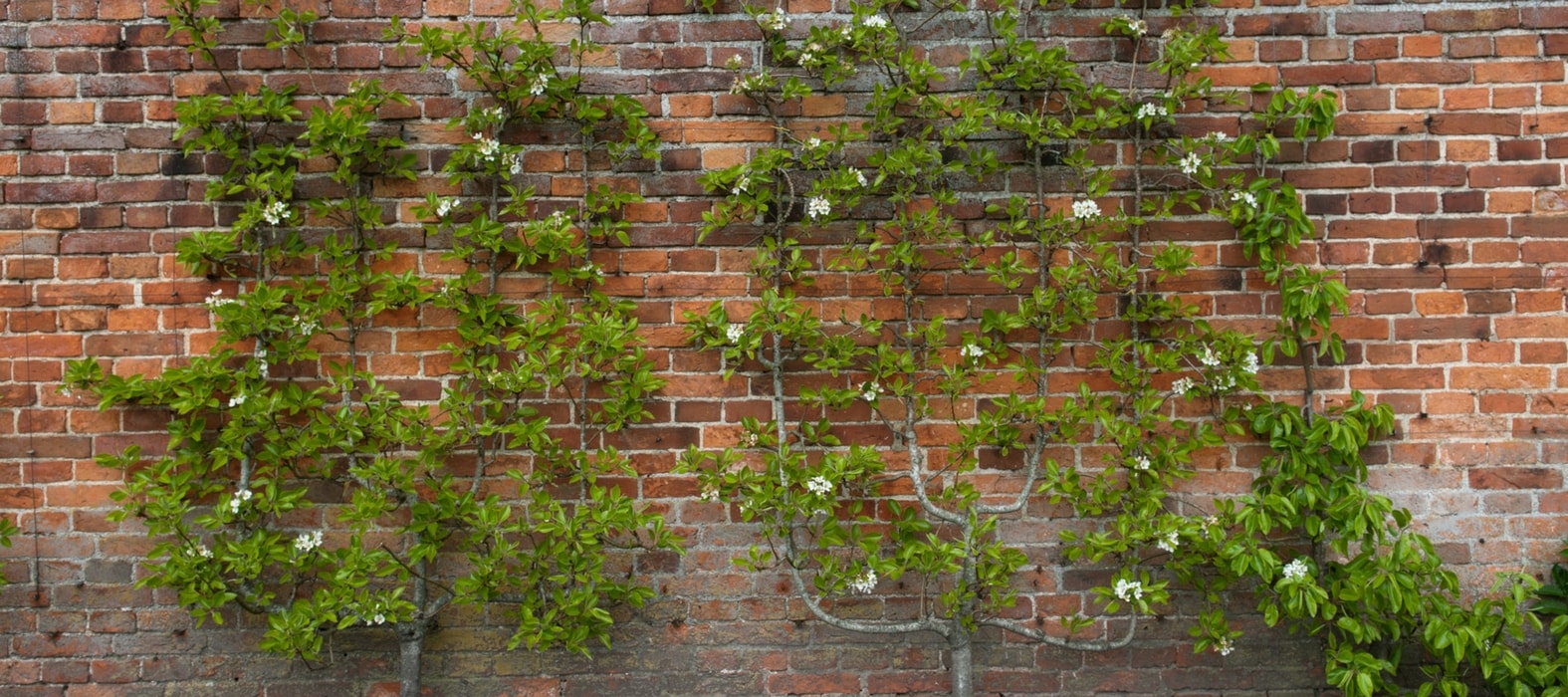
Pruning fruit trees in palmate
Apple trees, pear trees, apricot trees, peach trees and nectarine trees
Contents
How about transforming your orchard into a true work of art? Pruning fruit trees into palmate shapes is a bit like creating a living sculpture. Not only does this technique give your trees an elegant and tidy appearance, but it also allows for optimising fruit production while saving space. Whether you are a novice or an experienced gardener, learn to master this ancestral art for a garden that is both aesthetic and productive. Ready to give a precise pruning shear cut? We’ll guide you step by step!
What is palmate pruning?
Palmette pruning is a method of training fruit trees that involves shaping them into a fan, with branches arranged horizontally or slightly inclined. It is particularly valued in small gardens, as it allows for growing fruit trees along walls or fences while maximising space. The aim is to structure the tree to give it a precise shape, which facilitates maintenance, optimises sun exposure, and improves air circulation, two essential factors for producing beautiful fruit. This technique, both aesthetic and functional, is ideal for pear trees, apple trees, and peach trees.
Read also
Fruit trees: pruning of a young shootEssential tools
For effective and clean pruning, it is essential to have the right tools. A pruning shear that is well sharpened is the basic tool for cutting small branches with precision. For thicker branches, a bow saw will be necessary. A shear is ideal for cutting young shoots and finer twigs. Finally, do not forget to have a disinfectant to clean the blades between each pruning session, in order to limit the risk of disease transmission.
Discover other Espalier trees
View all →Available in 1 sizes
Available in 1 sizes
Available in 0 sizes
Available in 1 sizes
Available in 1 sizes
Pruning apple and pear trees in palmate form
When to Prune?
Pruning apple and pear trees in palmette form is mainly carried out during two key periods of the year:
- Formation Pruning (in winter):
This is done during the dormant period, that is to say between November and March, outside of frost periods. This pruning helps to structure the tree and guide the branches to give it the desired shape. It is the ideal time to remove dead or poorly oriented branches and to encourage balanced growth. - Summer Pruning (in green):
This pruning takes place during the growing season, usually in June or July. It involves controlling the tree’s vigour, limiting the excessive development of new shoots, and improving the aeration and sunlight exposure of the fruits. It also helps to maintain the trained shape of the tree.
These two pruning periods are complementary for achieving a well-structured and productive palmette!
How to Prune?
First, it is necessary to observe and learn to recognise the wood eyes, which are oval and swollen, the floral buds, which are larger and rounder, and the spurs, which are pointed and dry, that will develop into wood eyes or floral buds.
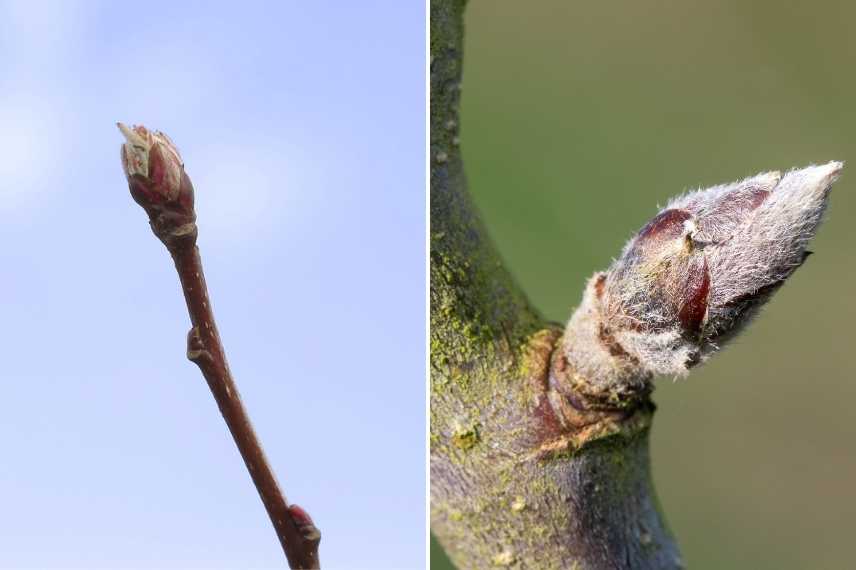
Wood eyes (or wood buds) attached along the branch, globose floral bud at the tip (on the left), and pointed spur perpendicular to the branch (on the right)
The most common fruiting pruning is the trigemme pruning or pruning to 3 eyes. This is done in March, which allows for clear distinction of the buds. Trigemme pruning is performed on lateral branches: prune these branches to 3 eyes, unless the last one is a spur (in which case, cut above another wood eye). This pruning generally allows for the development of 2 new branches (the 1st bud near the base developing into a spur).
The following winter, remove one of the branches, the one with the fewest floral buds, and prune the other branch to 3 eyes. As soon as you obtain a flower bud near the base, cut just after this bud.
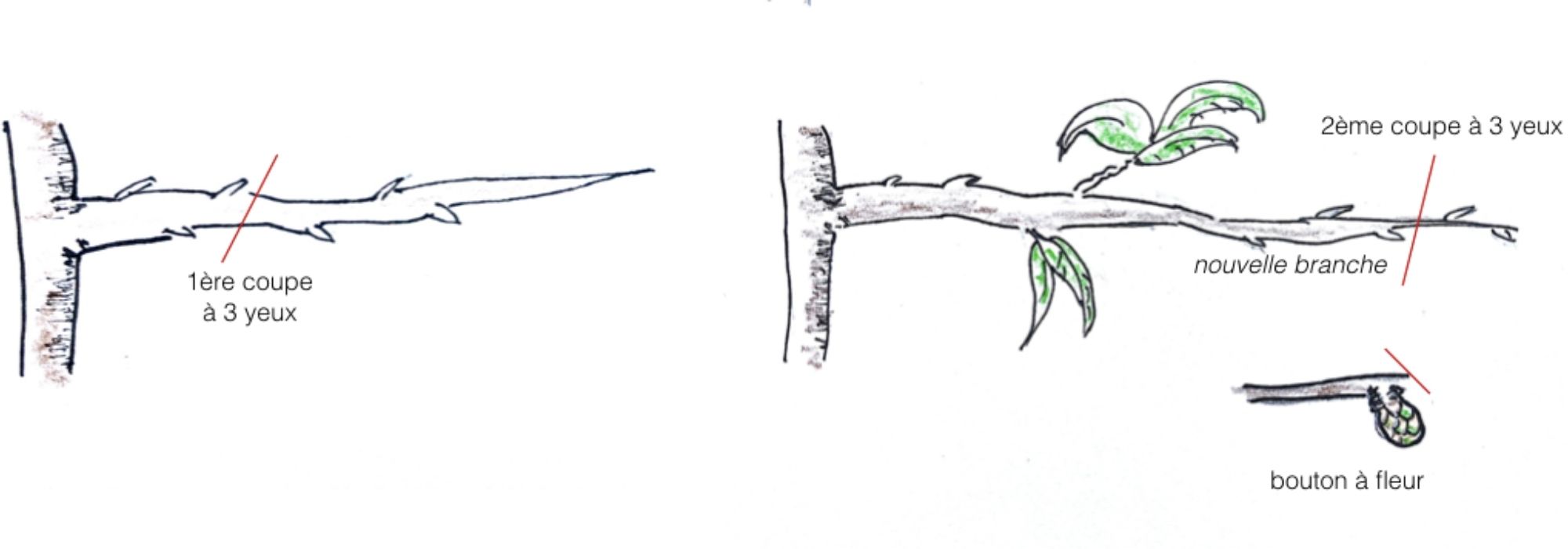
Around April, thin out by removing poorly positioned buds. At the beginning of summer, when poorly formed fruits have naturally fallen, thin out by keeping only one (or two) fruits per cluster, that is to say 10 to 15 per metre of framework. For apple trees, it is the apple in the middle of the cluster that will be kept, while for pear trees, it is the pears on the periphery that will be retained.
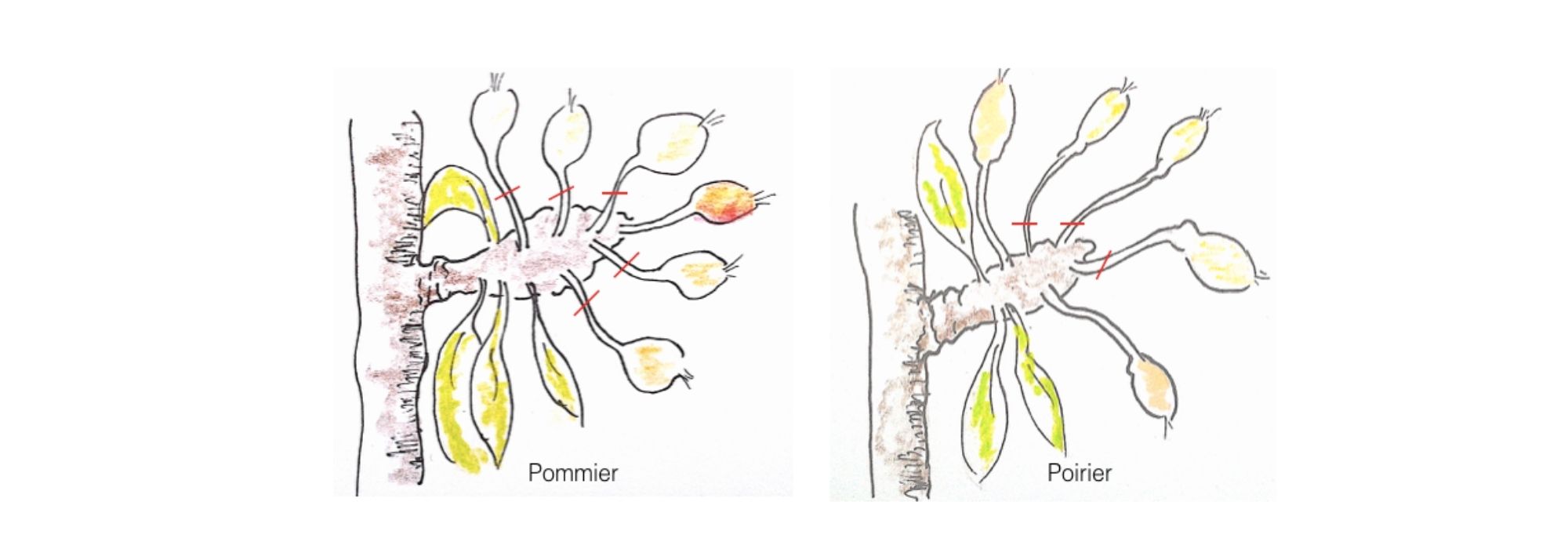
Perform a green pruning during the summer: pinch the lateral shoots after the 5th leaf from the fruit if there is one, or from the trunk otherwise. Remove unnecessary, overly vigorous, poorly placed shoots and suckers.
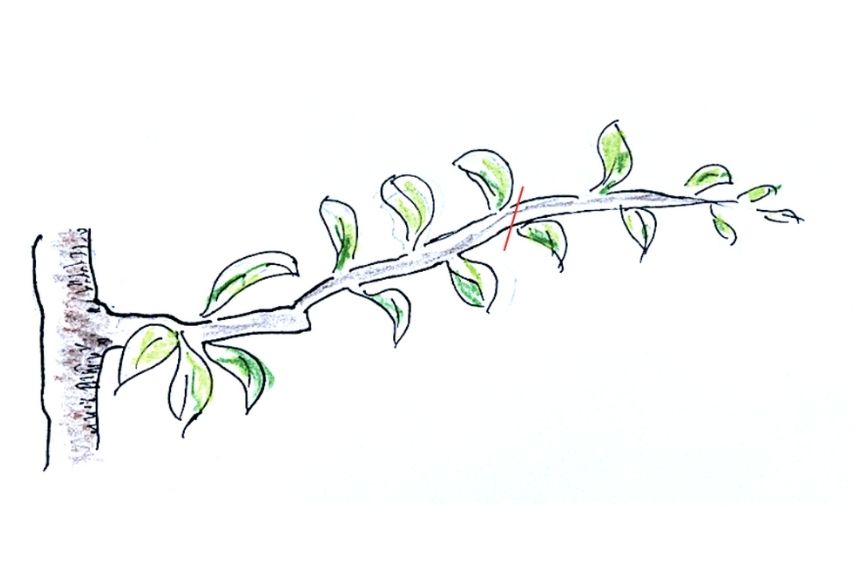
Green pruning at the 5th leaf
Adjust the pruning according to the variety and vigour of your tree: pruning is generally done to three eyes but can be done between three and five eyes. The branches of the most vigorous trees will be pruned long, and the summer pinching will be shorter.
Pruning apricot, peach, and nectarine trees
When to Prune?
Pruning apricot, peach, and nectarine trees in palmette form is mainly carried out during two periods of the year, with particular attention to these trees, as they are more sensitive than apple and pear trees:
- Formation Pruning (Early Spring):
This pruning is done at the end of winter or very early in spring, before the resumption of growth, usually between February and March. It helps to structure the tree, eliminate dead or poorly oriented branches, and prepare the tree for its spring growth. However, it is important to avoid pruning in cold or damp weather to limit the risk of infections. - Green Pruning (Summer):
This is carried out in July-August, after the fruit harvest. This pruning aims to thin out the foliage, limit the vigour of new shoots, and maintain the palmette shape. It is also crucial for reducing the risk of diseases such as canker or leaf curl, which are very common in these trees, and ensuring better air circulation among the branches.
These two periods allow for effective management of the health and shape of apricot, peach, and nectarine trees in palmette form!
How to Prune?
First, identify the wood eyes, which are sharper, and the flower buds, which are rounder.
Keep the chiffon branches (shoots bearing flower buds and ending with a wood eye) and the May bouquets (a cluster of flower buds on a very short shoot).
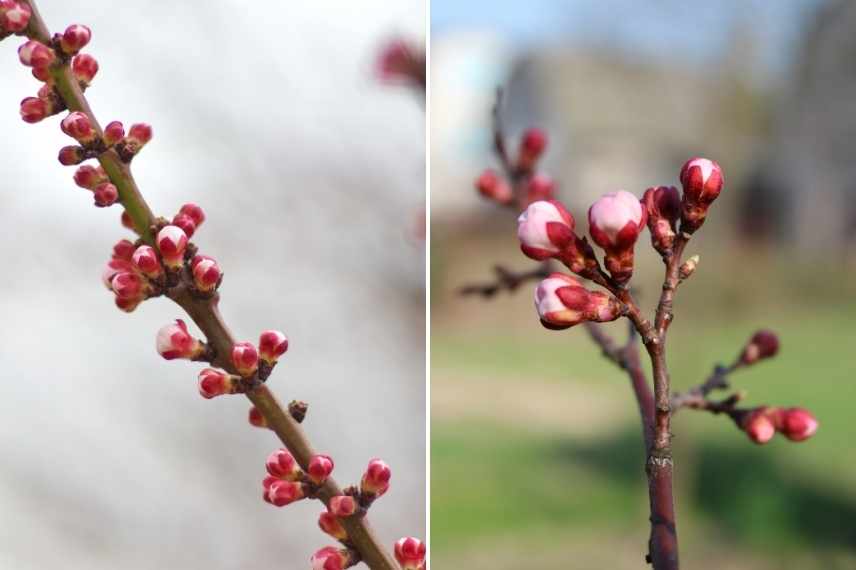
Chiffon branch of apricot tree (left), and May bouquet (right)
On mixed shoots, which produce both flower buds and wood eyes, prune above a wood eye while retaining 4 to 5 flower buds.
Shoots bearing only wood eyes should be pruned after the 4th eye. Also, remove any potential suckers.
Common mistakes to avoid when pruning espaliered fruit trees
- Pruning too early or too late: Off-season pruning can weaken the tree. In winter, wait until the risk of frost has passed, and in summer, prune after the harvest.
- Not respecting the structure: Cutting main branches or misdirecting branches can destabilise the shape.
- Over-pruning: Cutting too much can limit fruit production. Opt for gentle pruning to avoid stressing the tree.
- Subscribe!
- Contents































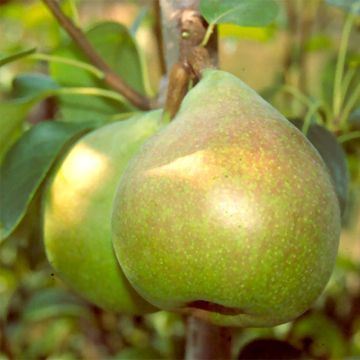
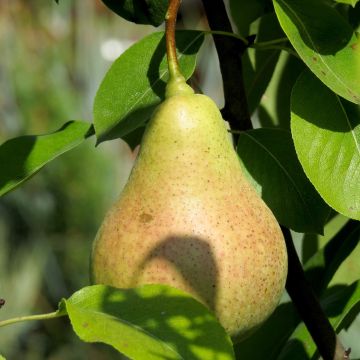
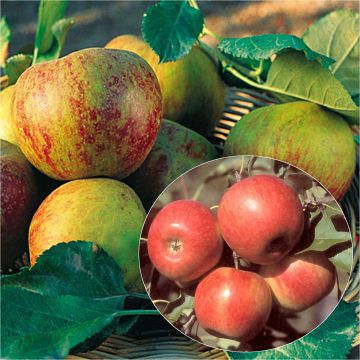

Comments